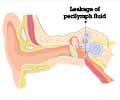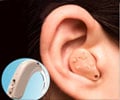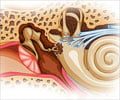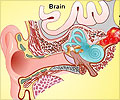In patients with inner ear disorder, the new implant helps improve balance, movement, and quality of life.

‘In patients with inner ear disorder, the new implant helps improve balance, movement, and quality of life.’





About 1.8 million adults worldwide with bilateral vestibular hypofunction (BVH) — loss of the inner ears’ sense of balance — walking requires constant attention to avoid a fall. Now, Johns Hopkins Medicine researchers have shown that they can facilitate walking, relieve dizziness and improve quality of life in patients with BVH by surgically implanting a stimulator that electrically bypasses malfunctioning areas of the inner ear and partially restores the sensation of balance.
Results from their study of eight patients using the device are published today in the New England Journal of Medicine.
To maintain balance while moving through the world around us, our brains receive and process data from multiple sensory systems, including vision, proprioception (muscles and joints) and vestibular sensation from the inner ears. People with BVH have difficulty keeping their eyes, head and body steady.
Head movements make their vision jump and blur, and walking requires conscious effort. Forced to deal with this mental distraction, individuals with BVH suffer a more than thirtyfold increase in fall risk and the social stigma of appearing to walk like someone who’s intoxicated.
Advertisement
“Although about 20 individuals had been implanted elsewhere with devices used to stimulate the vestibular nerve in a laboratory setting, participants in this trial are true pioneers — the first to use a vestibular implant as a long-term, 24-hour-per-day sensory restoration treatment,” says senior study author Charley Della Santina, M.D., Ph.D., professor of otolaryngology–head and neck surgery and biomedical engineering at the Johns Hopkins University School of Medicine and director of the Johns Hopkins Vestibular NeuroEngineering Laboratory, which conducted the study.
Advertisement
Electrical pulse strength and timing convey information about the speed and direction of the patient’s head motion which, in turn, drives head and eye reflexes that help maintain clearer vision during head movement and reduce the need to exert conscious effort to avoid falls.
In their study, the Johns Hopkins Medicine researchers evaluated eight patients with BVH who received the vestibular implant, assessing changes in postural stability, walking, hearing and patient-reported outcomes, including dizziness and quality of life.
Assessments were conducted before implantation surgery (the baseline measure) and at six months and one year afterward. Median scores improved for the group on four of the five posture and gait metrics, and on three of the four patient-reported outcomes.
All eight patients experienced some hearing loss in the implanted ear. Five maintained hearing in the implanted ear sufficient to use a telephone without a hearing aid, and three experienced greater hearing loss.
“Improvement in performance on standardized clinical tests of balance and walking has been remarkable,” says Margaret Chow, study lead author and biomedical engineering doctoral candidate at The Johns Hopkins University. “Even more gratifying is that our patients have been able to return to activities that enrich their daily lives, such as exercising, riding a bike, gardening or dancing at a daughter’s wedding.”
Overall, the improvement in quality of life and relief from the misery of BVH has been life altering, says A’ndrea Messer, Ph.D., one of the patients chronicled in the Johns Hopkins Medicine study and a senior science and research information officer at Penn State University.
“The multichannel vestibular implant is incredible,” says Messer. “Before receiving it, I couldn’t walk in the dark, on uneven ground or without a cane. Now, I can do all of those things and am living a fairly normal life.”
Along with Della Santina and Chow, the research team members from the Johns Hopkins University School of Medicine are Andrianna Ayiotis, Peter Boutros, Stephen Bowditch, John Carey, Yoav Gimmon, Carolina Treviño Guajardo, Kelly Lane, Brian Morris, Desi Schoo, Michael Schubert, Daniel Sun and Bryan Ward. Team members from industry sponsor Labyrinth Devices LLC are engineers Mehdi Rahman and Nicolas Valentin, both alumni of the Vestibular NeuroEngineering Laboratory.
The study was supported by grants R01DC013536 and 2T32DC000023 from the National Institute on Deafness and Other Communications Disorders.
The Johns Hopkins University and Labyrinth Devices LLC, of which Della Santina is founder and CEO, hold royalty interests in pending and awarded patents for the vestibular implant used in this study. Terms of this agreement are managed in accordance with university policies on conflict of interest.
Source-Newswise















